On its surface, Biomutant might look like an evolution of the kinds of character-based, 3D platformers that defined the mid-to-late ’90s. The critter protagonist was a staple of that era: Banjo and Kazooie, Spyro, Conker, even Gex. For gamers of a certain age, seeing Biomutant’s anthropomorphic ronin—complete with makeshift weaponry and a cool eye patch—traveling about the land, getting in fights and restoring peace to the world probably triggers a wave of nostalgia and a hope that the kind of epic, animal-based game we imagined as kids has finally been realized.
But gaming now is not like gaming then, and trends dictate that what might have been a pure action game or platformer in the ’90s and ’00s will inevitably have some sort of RPG framework attached to it. That’s not inherently the right or wrong choice. When it clicks, as it does with the Souls games, progression feels meaningful and enhances the gameplay without forcing players out of the action to spend hours in menus. When it doesn’t click, as with the recent Outriders, the RPG elements disrupt the pacing and ruin the more fun aspects of the game.
Biomutant is another kind of experience. It’s not a game where disparate design elements are cohesively woven together to become more than the sum of its parts. It’s also not one where the RPG elements feel sloppily grafted onto an otherwise solid action game. It’s a game with a ton of ideas—many of them great—that seem only halfway realized.
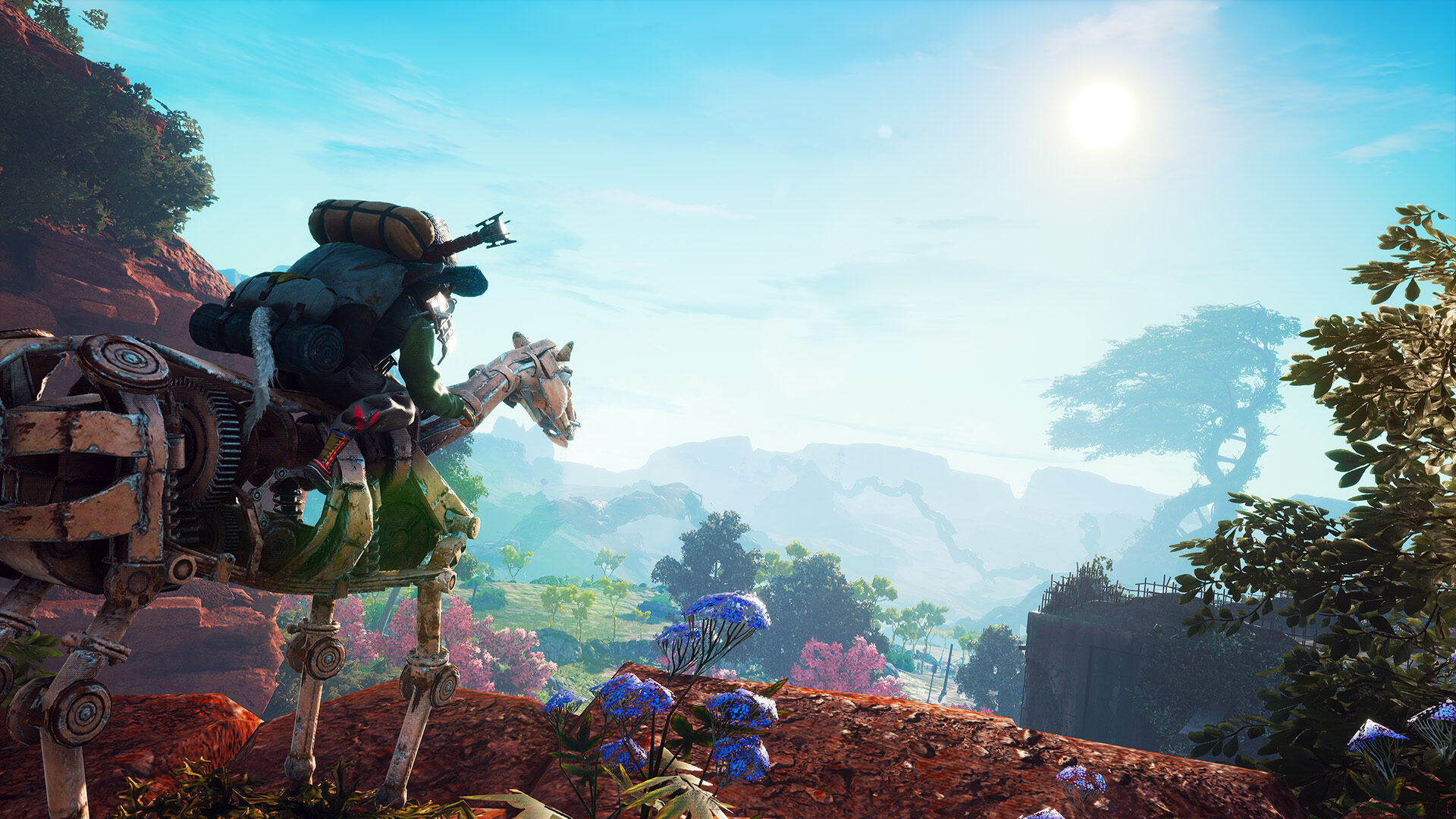
You start Biomutant by creating your nameless critter, which means picking both a breed and a class. Your breed supposedly determines what attributes you favor in the beginning: Vitality, Strength, Intellect, Charisma, Agility, and Luck. I say “supposedly” because, as far as I could tell, it really doesn’t make a difference what breed you pick, as you can customize any breed to favor any of the attributes you want. In the end, it only impacts what your character ends up looking like, though depending on what attribute you favor, two characters from the same breed might also end up looking completely different. High intellect characters, for instance, generally have scrawny bodies and big heads, while high Strength characters are exactly the opposite. Some players might not like having their character’s appearance tied to its attributes, but I felt an instant connection to my beady-eyed, long-necked freak.
While it might look like Biomutant’s character creation system gives you a ton of options, there are really only two good options to start with: putting all your points into strength, or putting all your points into intellect. These are the two offensive-leaning attributes, and putting points into any of the other stats feels like a waste at the beginning. Going with a character that’s well-rounded will just leave you at a disadvantage, and favoring attributes like Charisma or Luck—which might work in a more detailed and nuanced RPG—is a complete waste in Biomutant, as the gear you procure throughout your journey is really only as good as the character who is wielding it.
Class, meanwhile, determines what special skill and weapon you start with, and this too seems limited by what attributes you favor. A Psi-Freak, for instance, starts off with a unique Psi attack that throws out electrically charged balls, but the power of that attack is directly related to your Intellect, as is the amount of Psi energy you have and how quickly it recharges. Therefore, it would make no sense to have a high-Strength, low-Intellect Psi-Freak, although the game gives you that option. Other action RPGs might tie class to attributes so that you start with the tools that your character can use optimally, but Biomutant starts off with an uneven and clunky system that only works if you know what choices to make.
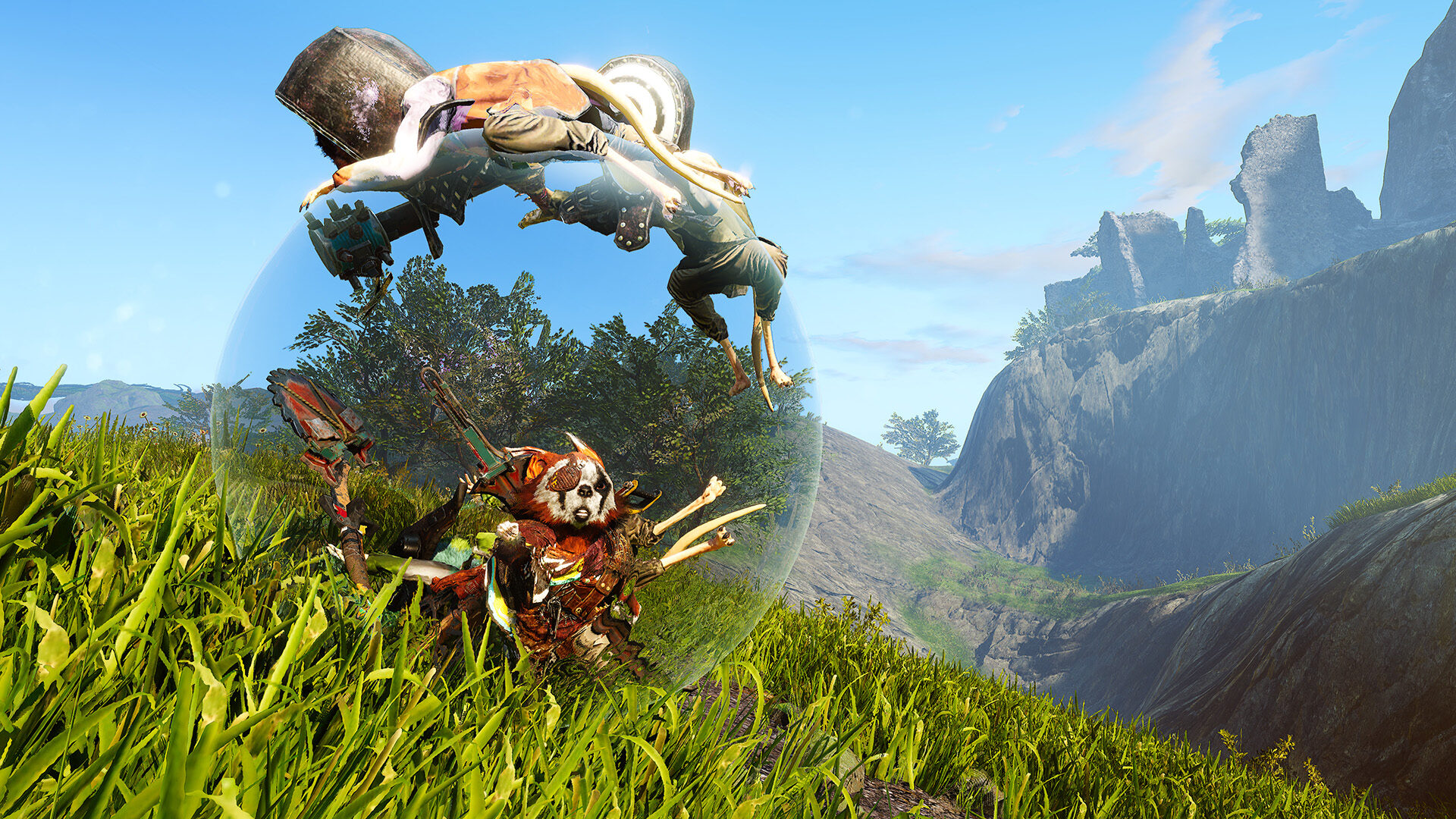
These awkward choices matter less as you level up your character and unlock skills, but considering the maximum points you can start with in a single attribute is 100 and you only get 10 points for each level, it can definitely take you a while to create parity between your melee attacks and your Psi attacks. It also seems strange that there are three different methods of attack in the game—melee, Psi attacks, and ranged attacks with guns—but there isn’t really an attribute that impacts your character’s ranged damage.
That might not be an issue in other action-RPGs, where your character class is more closely tied to your weapons and gameplay choices. But the combat in Biomutant isn’t slow, methodical, or punishing like Dark Souls. It’s much closer to the straightforward action of Devil May Cry, where mixing melee, Psi, and ranged is the core of the combat system. Biomutant is a game that, by its nature, encourages you to utilize all three attack types in the course of a single battle. When it works, it’s incredibly fun, but, when one method of attack is clearly more powerful than the others, the RPG elements get in the way of maximizing your enjoyment.
But I must reiterate: When it does work, Biomutant’s combat is easily its strongest suit. This is mostly due to the amount of options you have at your disposal, between the different weapon types, gun types, and Psi and Biomutation abilities. Psi and Biomutation abilities both function as the game’s “magic” attacks, though Psi abilities are more traditional in that sense. Psi powers will let you damage enemies as you might expect. One lets you dash towards them and set the ground behind you on fire, which you can use to burn enemies. Another lets you shoot electricity out of your hands like Emperor Sheev Palpatine. My personal favorite was an ability that not only does a lot of AOE damage in an ice explosion but also freezes the ground around you so that enemies who try to attack will slip on the ice and hurtle forwards.
Biomutation abilities are a little less traditional. One of my favorites was an ability that let you spawn mushrooms out of the ground. You can either use these mushrooms as a trampoline for yourself, in both combat and exploration, or you can bounce enemies into the air and follow up with a devastating combo attack. If you already have a mushroom on the ground and spawn another one underneath an enemy, they are launched into the air and stuck bouncing between the two fungi. Not every Biomutation ability is as inventive as that, but many of them are, and there is a ton of variety in the effects your abilities can have.
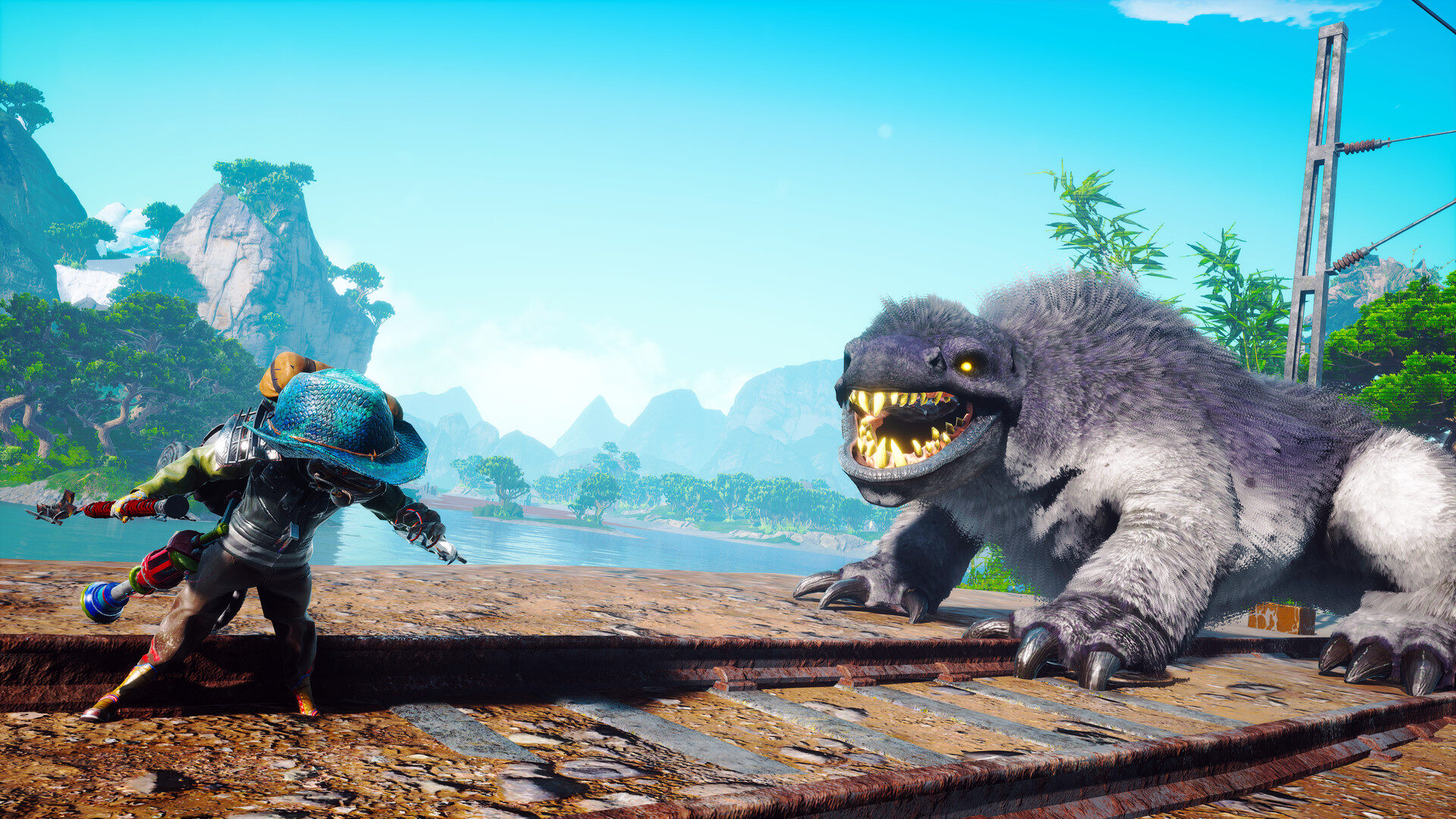
The more traditional aspects of Biomutant’s combat are just as fun, due to the variety of weapon types and the control that players have over building these weapons. Almost all of Biomutant’s weapons, both ranged and melee, are made out of scrap that players find throughout the world. At any time, if they have the right scrap and enough resources, players can build and customize their weapons based on a handful of predetermined types.
This weapon customization system is one place where Biomutant’s RPG systems feel fully realized, focused, and well-integrated into the rest of the game. Each type of weapon plays differently, as one might expect from an action RPG, but the combos that players can unleash to deal more devastating damage and build up the special attack meter all use the same button inputs. Depending on your taste, this might make Biomutant’s combat feel too simple, but it also means you can pick the weapon based on what type you prefer, rather than what combos are easiest to pull off.
As well-realized as it is, there’s something that’s just slightly off about Biomutant’s combat. There’s a certain clunkiness to how battles play out. Partly, it has to do with the kind of visual feedback that you get. The way that the ranged cursor will soft-lock to characters you’re looking at can make it kind of hard to figure out which enemy in a group is the one you’re actually shooting. Same goes for the melee feedback. Sometimes, you will stagger enemies, but sometimes those same enemies will swing through your attack and hit you anyway. Other times, the timing on the game’s parry system—easily the game’s most overpowered combat mechanic—just doesn’t seem right, especially when the attacks you’re trying to parry (and which you should be able to, as indicated by wavy lines appearing over their heads) are coming from a larger mini-boss or as a series of parryable attacks. As with many of Biomutant’s features, even the game’s combat feels slightly wonky and undercooked.
But the most wonky and undercooked aspects of Biomutant are easily its story and, even more so, its overarching open-world structure. Taking place an indeterminate amount of time after human society has caused its own toxic downfall and mutant creatures have spawned a new sort of civilization, your own mutant is a ronin warrior that has been traveling the land also for an indeterminate amount of time. After stumbling upon an amputee named Out-of-Date, you are tasked with destroying four monsters called Worldeaters that are chewing the roots of the Tree of Life, the source of all life that you helped plant as a kid.
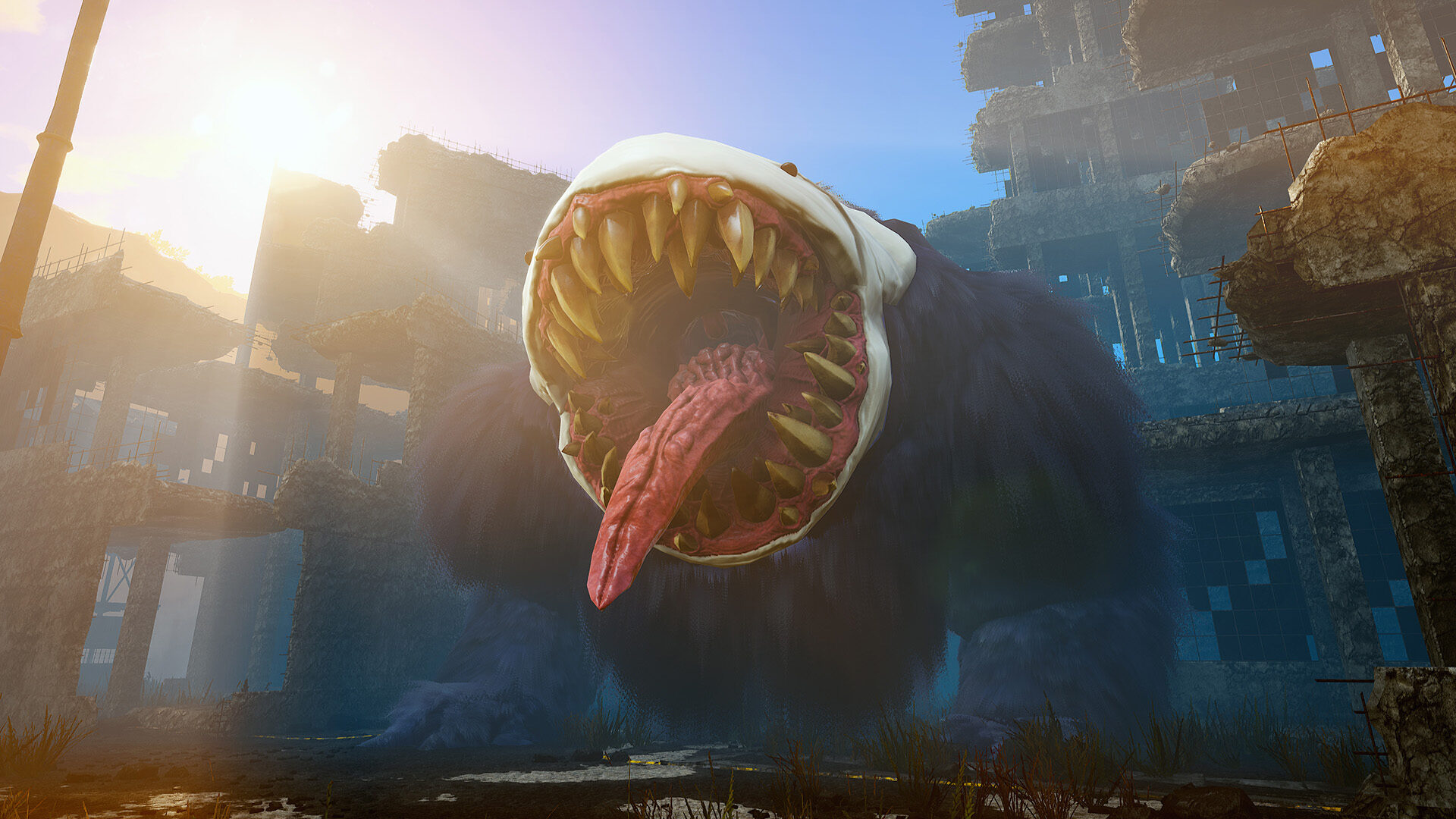
If that wasn’t enough, you’re also tasked with reunifying the world’s tribes who are all led by former disciples of your mother that split up when she died. Also, you have a slight amnesia and are piecing together the details of your past. Also, you’re trying to exact revenge on the monster who killed your parents. Oh, and did I mention there’s a UFO underneath the tree that’s going to take a few lucky inhabitants on a trip across the stars?
There are a lot of story threads running through Biomutant, all of which could have provided enough motivation on their own to see the story through. But because there are so many, none of them really amount to anything.
Take the Worldeater missions, for example. In order to defeat each of the four Worldeaters, you follow a similar trajectory: Meet up with one of Out-of-Date’s compatriots, help them build or retrieve a mount or vehicle required to reach the monster, and then fight the monster. But, while the overarching stakes of saving the world are high, there’s nothing to the story beyond that.
It’s hard not to compare Biomutant’s structure to The Legend of Zelda: Breath of the Wild, which gives you a similar task of traveling to the four corners of Hyrule to wrest back control of the Divine Beasts. The difference is, in that game, there was always a compelling story attached to that quest, where Link not only saved the world but readied the next generation of Champions, too. Biomutant’s main quest doesn’t have anything as personal or compelling as that. It’s simply a series of tasks leading to a boss fight, and that’s it.
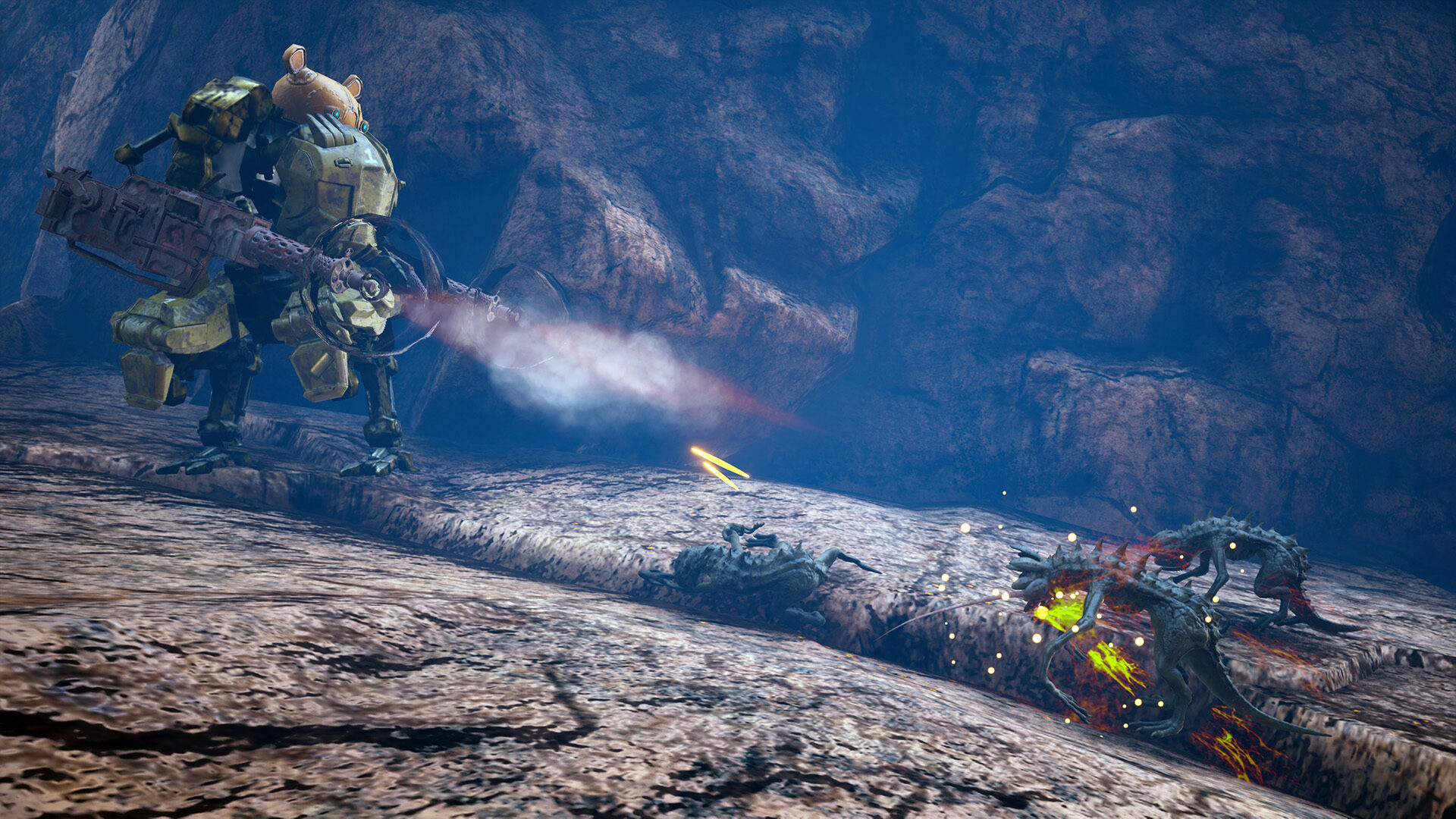
The game’s other main narrative focus—settling the tribe war—is just as undercooked. When you start a new game, you will have the option to side with one of two tribes and be tasked with conquering the other tribe’s outposts before taking down its leader or “Sifu.” You can stick with your tribe or side with a new tribe throughout the course of the game.
The tribe war storyline has all the makings of an interesting RPG system, but the game doesn’t support interesting choices or even give you the kind of narrative carrot-on-a-stick that lends any weight to choosing one tribe over another. There are no emergent storylines that occur depending on which tribes you’re fighting for and against. There are barely any characters associated with each tribe besides the Sifus themselves. Even more bizarrely, at least in the first playthrough, you only have to conquer two rival tribes before the game gives you the option to make a peace deal with the remaining five. You can choose to keep fighting if you want, but if you decide to end the war right then and there, you won’t be able to earn the rest of the unique Tribal Weapons that you get when you conquer a tribe. But even more than that, this option to simply end the war makes the tribes feel completely meaningless. It’s as if the game is saying, “Yeah, none of this really matters; it was just an excuse to drag out the game’s playtime, but you can just skip it if you want.”
Biomutant does absolutely nothing to make this conflict compelling on a narrative level. The only other thing that differentiates the tribes, besides their looks, are their Auras, which can be either Light or Dark. Which leads to Biomutant’s final RPG mechanic: a “morality” system represented as your character’s Aura. Depending on choices you make throughout the game, you can either have a Light Aura or a Dark Aura. Choose to help a villager rescue their friend, for example, and you will gain Light points. But if you choose to ignore their cries for help, you will earn a Dark Aura.

Like everything else in Biomutant, the Aura system is half-baked. Instead of working on a sliding scale, making a Light or Dark decision will give you a point in that respective column. Some of the Psi powers require you having a specific amount of Light or Dark points, which makes sense in theory, but you don’t actually lose Light points for, say, making a Dark decision. It just tallies it up. So if you’re playing a mostly Light character, but you want to unlock a “Dark” Psi power, you can just go ahead and make a bunch of Dark decisions without losing any light points. This leads to a very uneven sense of your character’s progression throughout the game.
The other problem with the Aura system is the choices you’re given. Making a Light decision when talking to an NPC in need means you’ll get a side quest that can usually lead you to decent loot and a healthy amount of XP. But if you decide to play it Dark, you don’t get an alternate version of that side quest. You just don’t get a quest at all—and, for some reason, you punch the character who was asking for your help. Going Dark, therefore, is a non-option if you want to see and experience everything that the game has to offer.
The only place where you are actually impacting the story (because it’s the only place where there is an actual story) is the ending. Depending on which tribe you sided with and how you ended up resolving the war, you can either save the world or end it. But given how little connection I felt for the world because of how underdeveloped its inhabitants were, I couldn’t have cared less what happened to it in the end.
More New Game+, More Problems
Speaking of endings, once I beat Biomutant the first time, I started a New Game+ to replay the game with my same character. In New Game+, instead of choosing to side with one of the game’s first two tribes offered, I was able to side with any one of the game’s seven total tribes. Which was great, except it feels like… that’s how the game should have been from the beginning?
Even weirder was that, while I kept whatever gear I earned and skills I unlocked my first time through, all the attributes that I leveled up were reset to where they were when I first created your character. This also means that some of the weapons I built or found were unusable because I didn’t have the attributes I needed in order to wield them.
An action-RPG completely stripping my level when starting a New Game+ is such a baffling choice that I had to contact the developer to see if this was an intentional design decision or a bug. I never heard back on that, though they did say that they are working on balancing the New Game+ experience.
I’ve been using the words “undercooked” and “half-baked” throughout this review, but indulge me with just one more food metaphor: Biomutant is like a buffet. You have a bunch of food that you think you like—lasagna, sushi, chow mein, mashed potatoes—but they don’t go well together and, besides, they are worse versions of those items than what you could have gotten at a standard restaurant. I’m not saying you won’t have fun, but you won’t feel satisfied.
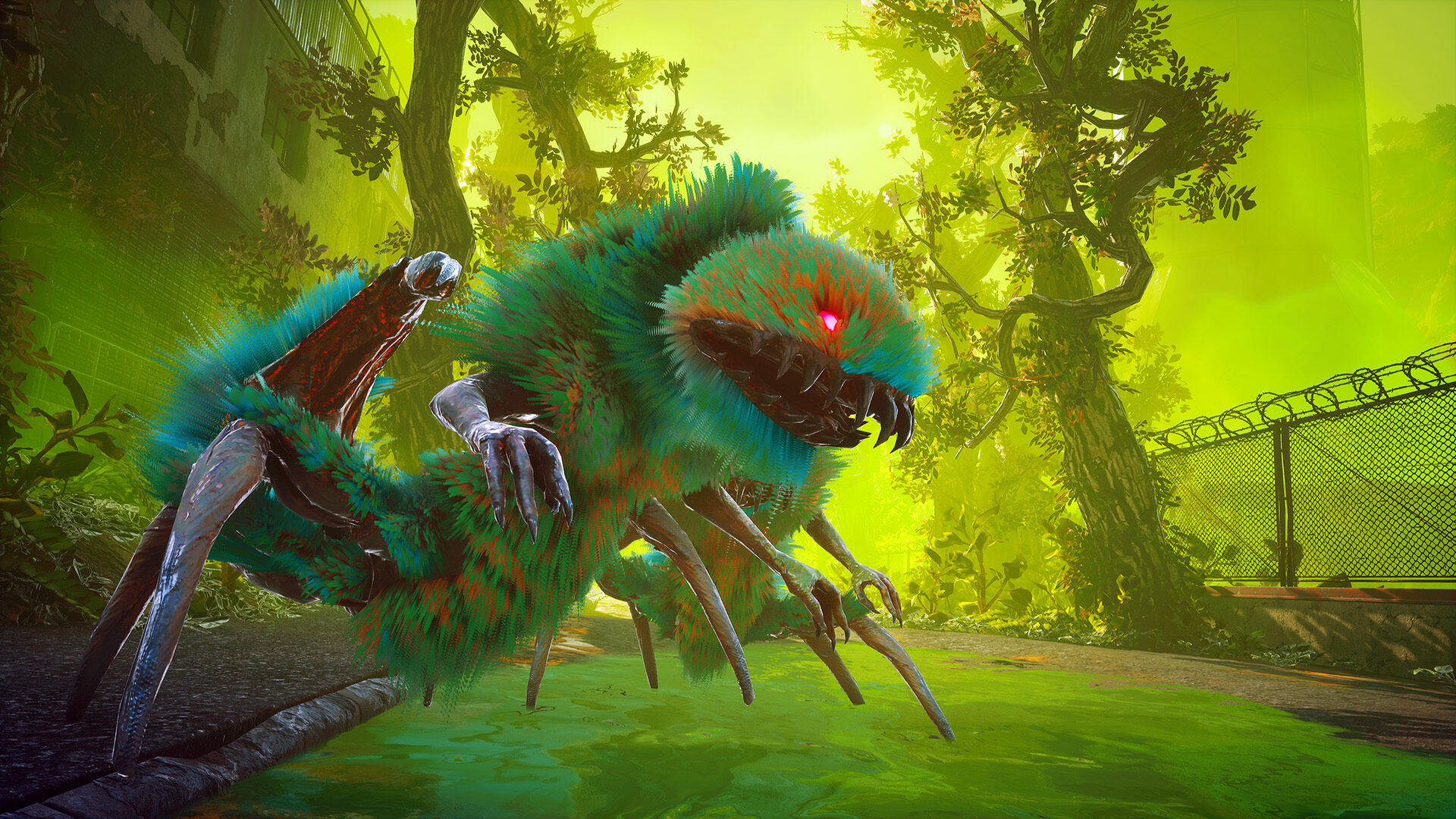
Images: THQ Nordic GmbH
|
★★☆☆☆
Biomutant is trying to be too many things. It can be fun when you’re comboing supernatural abilities and homemade weaponry to take down a group of bad guys as a furry little post-apocalyptic ronin. But its RPG mechanics are so clunky and uneven, and its various story threads are so underdeveloped, that you’ll end up feeling like nothing you do actually matters. If you just want to explore yet another open-world and beat up some bad guys, then Biomutant will keep you busy for a few hours. Just be ready to encounter a slew of baffling and questionably executed design choices. |
Developer Experiment 101 Publisher THQ Nordic GmbH ESRB T - Teen Release Date 05.25.21 |
| Biomutant is available on Xbox One, PS4, and PC. Primary version played was for Xbox One. Product was provided by THQ Nordic GmbH for the benefit of this coverage. EGM reviews on a scale of one to five stars. | |

Michael Goroff has written and edited for EGM since 2017. You can follow him on Twitter @gogogoroff.